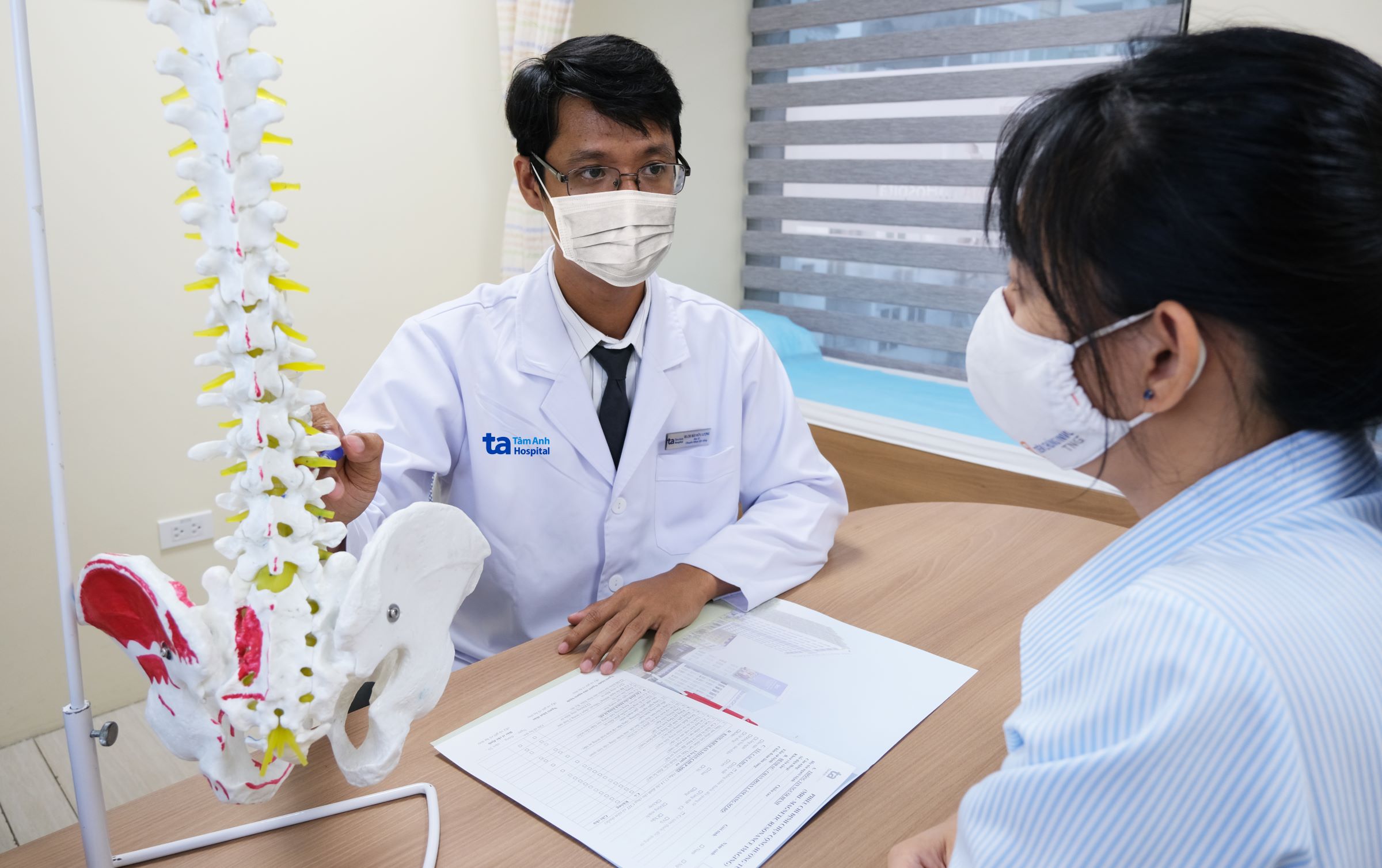A dull ache in the back that gradually spreads to the buttocks, calves, and feet, sometimes causing reduced or complete loss of sensation in severe cases, is a common complaint. Dr. Dang Quoc Duan, from the Spine Surgery Department of Tam Anh General Hospital in Ho Chi Minh City, notes that many people underestimate this condition. By the time the pain and numbness escalate enough to disrupt daily life and work, prompting a doctor's visit, the condition has often significantly progressed.
Dr. Duan highlights several conditions that can cause back pain and leg numbness:
Sciatica typically presents as pain, burning, and numbness radiating from the lower back down to the buttocks, thighs, calves, and feet. The pain usually affects only one side of the body and worsens with prolonged sitting or sudden movements.
Lumbar spondylosis is a chronic condition caused by the gradual wear and tear of the intervertebral discs and spinal joints. Back pain is one of its hallmark symptoms, characterized by a persistent, dull ache that intensifies with back movement. In advanced cases, the pain can radiate down the legs, and severe cases can lead to loss of balance and muscle weakness.
 |
Dr. Duan explains spinal conditions to a patient. Photo: Tam Anh General Hospital |
Dr. Duan explains spinal conditions to a patient. Photo: Tam Anh General Hospital
Spinal stenosis involves the narrowing of the spinal canal and can occur in various parts of the spine. Lumbar spinal stenosis is the most common and complex form, causing symptoms such as lower back pain, numbness and pain in the calves and legs. It can also lead to muscle cramps and weakness, significantly impacting daily activities.
Spondylolisthesis occurs when one vertebra slips forward or backward over the one below it, causing lower back pain and numbness that extends down one or both legs. If symptoms aren't detected early, the condition can worsen, potentially leading to permanent paralysis of both legs.
A herniated disc happens when a spinal disc is displaced or bulges out of its normal position, compressing nerves and causing numbness and pain. A herniated disc in the lumbar region often results in a sudden, sharp pain or a persistent, dull ache in the lower back. Numbness can spread from the lower back down to the buttocks, calves, and feet. More severe cases can involve muscle weakness, stiffness, difficulty walking, and limited bending and straightening movements.
Osteoarthritis can cause swelling and pain in one or more joints throughout the body, with varying degrees of pain. Most cases of osteoarthritis involve back pain accompanied by leg numbness.
Fibromyalgia is a chronic disorder that, while not causing structural damage to the joints, increases the body's sensitivity to pain within the central nervous system. Consequently, even localized pain around the lumbar spine can be perceived as widespread body pain.
Dr. Duan adds that besides these conditions, back pain and leg numbness can also signal spinal infections, kidney disease, or gynecological problems. Early medical consultation is crucial, potentially involving X-rays, MRIs, CT scans, Doppler ultrasound, and electromyography for accurate diagnosis and timely treatment to prevent complications.
Phi Hong
| Readers can submit questions about musculoskeletal diseases here for doctors to answer. |












